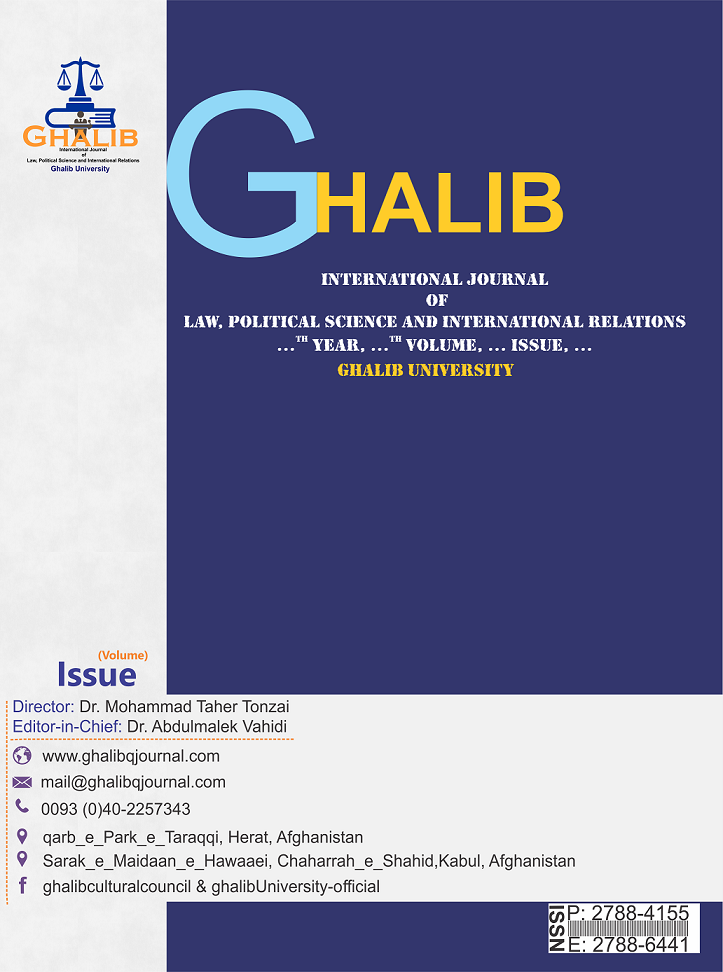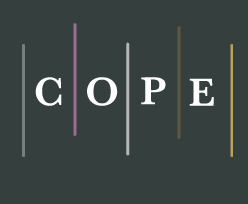1. General Information
- The Ghalib Journal accepts only original, research-based, and unpublished manuscripts.
- Submissions must not be under review by any other journal simultaneously.
- Manuscripts may be written in Persian, Pashto, or English.
- Articles written in Persian or Pashto must include an English abstract.
- The authors bear full responsibility for the scientific accuracy, linguistic quality, and ethical integrity of their work.
- Acceptance of manuscripts is subject to peer review, editorial approval, and technical editing.
2. Academic and Quality Standards
In its effort to be indexed in international databases such as Scopus and Elsevier, the Ghalib Journal adheres to the following academic and ethical standards:
- Originality and Scientific Innovation: The manuscript must contribute new knowledge or offer novel analysis within its field.
- Structural Coherence: All parts of the manuscript (Introduction, Method, Findings, Conclusion) should be logically and cohesively connected.
- Current and Reliable References: At least 40% of references should be from the last five years.
- Methodological Transparency: The type of research, population, instruments, analysis methods, and ethical considerations must be clearly described.
- Adherence to Publication Ethics (COPE): Authors must ensure academic honesty, avoid plagiarism, disclose conflicts of interest, and respect participants’ rights.
3. Article Structure
Manuscripts should be between 6,000 and 8,000 words and include the following sections:
- Title Page
Full title (maximum 20 words), full names of authors, academic rank, department/faculty, university, city, country, and email. The corresponding author must be marked with an asterisk (*). ORCID ID for each author is mandatory.
- Article Information
Type of article (research, review, analytical, etc.), date of submission, acceptance, and publication.
- Abstract
Should contain background and objectives, methods, findings, and conclusion. The abstract should be between 150 and 250 words and include 3–7 keywords. English abstracts are mandatory for manuscripts in Persian or Pashto.
- Introduction:
Presents background, significance, literature review, research gap, objectives, and research questions or hypotheses (5–10% of total length).
- Conceptual or Theoretical Framework
Defines key concepts and explains relationships between them (mandatory for qualitative research).
- Research Methodology
Specifies the research type (quantitative, qualitative, or mixed-methods), population and sample, data collection tools, analytical methods, and ethical considerations.
- Findings
Presents results clearly using tables and figures. Table titles must appear above, and figure titles below each illustration.
- Discussion
Interprets the results, compares them with previous studies, and addresses limitations.
- Conclusion and Recommendations
Summarizes key findings and offers practical and research recommendations.
- Acknowledgments (optional)
Mentions institutions or individuals who supported the research.
- Conflict of Interest and Funding
Any financial or organizational conflict of interest must be explicitly declared.
- References
Must follow the APA (6th edition) citation style, with in-text citations such as (Author, Year, p. X).
4. Formatting and Style
- File format: Microsoft Word (.docx)
- English font: Times New Roman, size 10; line spacing 1.0; page margin 2.5 cm.
- Heading levels: Use numbered headings (1, 1.1, 1.2, etc.).
- Numerals: Use English numerals in English text.
- Tables and figures: Must be consecutively numbered and of high quality.
- Author information: Full author details, email addresses, ORCID IDs, and the English title must appear in the main file.
5. Publication Ethics
The Ghalib Journal follows the principles of the Committee on Publication Ethics (COPE):
- A declaration of conflicts of interest and funding sources must appear at the end of the manuscript.
- Any plagiarism, data manipulation, or duplicate submission will result in immediate rejection.
- For studies involving human participants or fieldwork, ethical approval from a recognized ethics committee is required.
- All manuscripts are subject to double-blind peer review.
6. Peer Review and Tracking Process
- Each submission is first checked for structural and formatting compliance.
- If the manuscript does not meet the requirements, it will be returned to the corresponding author for revision before peer review.
- Reviewers’ comments are sent only for manuscripts conditionally accepted pending revision; reviewer feedback for rejected manuscripts will not be shared.
- The corresponding author can track the peer-review status via the journal’s online submission system.
7. Publication and Licensing
- Accepted papers are published in both print and online editions with a unique DOI number.
- All publications are licensed under the Creative Commons Attribution 4.0 International (CC BY 4.0) License.
- Proper citation of published articles should follow this format:
Karimi, Ahmad, et al. (2025). Title of the article. Ghalib Scientific-Research Quarterly, Vol. (No.), 00–00. DOI: https://doi.org/...
8. Important Notes before Submission
- Download the official article template (qualitative or quantitative) from the journal website.
- Insert all article components (title, abstract, text, and references) into the template.
- Ensure that:
- Persian/Pashto and English abstracts are complete.
- Author information and ORCID IDs are provided.
- References follow APA 6th edition.
- The final file is prepared in Word format (and optionally in PDF).
- Revisions must be submitted according to reviewers’ comments via the author’s account.
9. Contact Information
Website: www.ghalibqjournal.com
Email for submissions: mail@ghalibqjournal.com
Publisher: Ghalib University – Herat, Afghanistan












